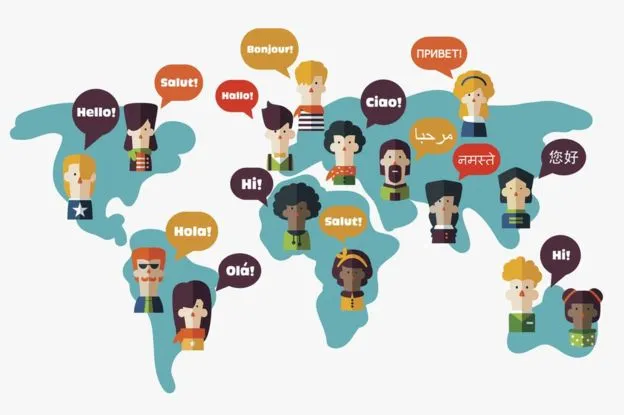
The company, based in Mountain View, California, USA, launched its automatic translation service in 2006 with options in English, Arabic, Chinese and Russian.
Today, he is able to translate more than a hundred languages and is used by some 500 million people in the world, especially in Brazil, according to his most recent statistics.
"Our goal was to break down the language barrier and make the world more accessible," said Barak Turovsky, Google Translate product manager.
"We offer 103 languages that cover 99% of the population on the internet."
Every day, the popular Google tool translates some 100,000 million words.
But your system is not perfect. He often makes mistakes.
And more and more companies and scientists are inventing systems to make it compete.
Pocket translators and applications
Travis is one of them.
Your universal translator "speaks" 80 languages ... and is able to translate all at the same time.
Its strong point, says the executive director of Travis The Translator, Brend Kouwenhoven.
"We designed Travis for natural face-to-face conversations, to use it without looking at it and without needing to keep it stuck to the mouth".
Kouwenhoven says that just "click and speak" is enough for Travis to express what you said in another language.
This year, the company presented its "personal translator" at CES 2018, the largest consumer electronics fair, which was held in Las Vegas, USA, from January 9 to 12.
The product was successful thanks to a collective financing campaign on the Indiegogo website.
The system uses artificial intelligence that allows it to pass from voice to text and from text to text through software.
In fact, it can translate up to 120 languages using 16 translation engines, "although not all of them are available in voice, that's why we say we have 80," clarifies the company's executive director.
The company has sold more than 80,000 devices worldwide and is developing a new product that it expects to present next month at the Mobile World Congress in Barcelona, Spain.
Another simultaneous translator that is causing a sensation is Pilot, an earphone capable of translating several languages at the moment that was created by the company Waverly Labs and designed by a French and Mexican team.
But what makes this type of "pocket" translators different from the Goolge Translate application, which you can also use on your cell phone?
Kouwenhoven finds three main differences.
"Those apps that work on the smartphone are fine if you talk to a family member, but when you travel, people do not usually leave their phone to a stranger, especially for all the personal information it contains," he says.
In addition, the director of Travis says that the quality and focus vary: "Google Translate is great and that's why we have included it among our translation engines, but other engines offer a higher quality and our software chooses which is the best for each We offer more languages. "
"Also, if you are in China you have no option to use Google," he adds.
Kouwenhoven says that the simultaneous translation applications that people usually download - iTrasnlate, Word Lens and SayHi are some of the most popular - are not used as much "in real situations", among other reasons, because sometimes the background noise is annoying or because the battery and interface problems make it difficult to use.
"Deep learning"
But the world of automatic translators is just beginning to be exploited on a large scale.
And the technology used does not always work correctly.
The researchers of the Faculty of Computing of the University of the Basque Country (UPV) Mikel Artetxe, Eneko Agirre and Gorka Labaka had to make great advances in this field.
His work was recently published by the specialized magazine Science and represents a great advance for translations with artificial intelligence (and not based on dictionaries or previously done translations, which are usually used by automatic translators).
This team of researchers has not developed a translator as such, but they hope that the technological advances they have achieved will allow them to train more efficient translation systems.
Machine translation works by means of rules established by humans, previously translated phrases that the computer uses as patterns for translations, but we rely on translating the text independently.
Gorka Labaka says that his system uses deep learning, which in Spanish is also known as "deep learning".
"The rules have been changing, before we used translations made using statistics, our system is similar to Google ... but with training, there are fewer restrictions and less human part," he explains.
Gorka says that in languages like German or Russian there are not so many translations done and that his method allows to cover languages that Google is not capable of.
"It's something very new, until now, nothing like it existed," says Mikel. "But it's still in its infancy."
Both researchers say that it is essential to check the translations done to teach the machines, because there are often machista biases and errors that need to be corrected.
It is what is known as "cleaning the corpus".
But, beyond detecting failures, what applications can your work have?
"The biggest benefit would be to have translations between more languages that today can not be achieved and understand things that we are not able to understand now," explains Gorka.
"Also make specific translations and make them faster." In the world, between 6,000 and 7,000 languages are spoken, there are still many to be translated ".